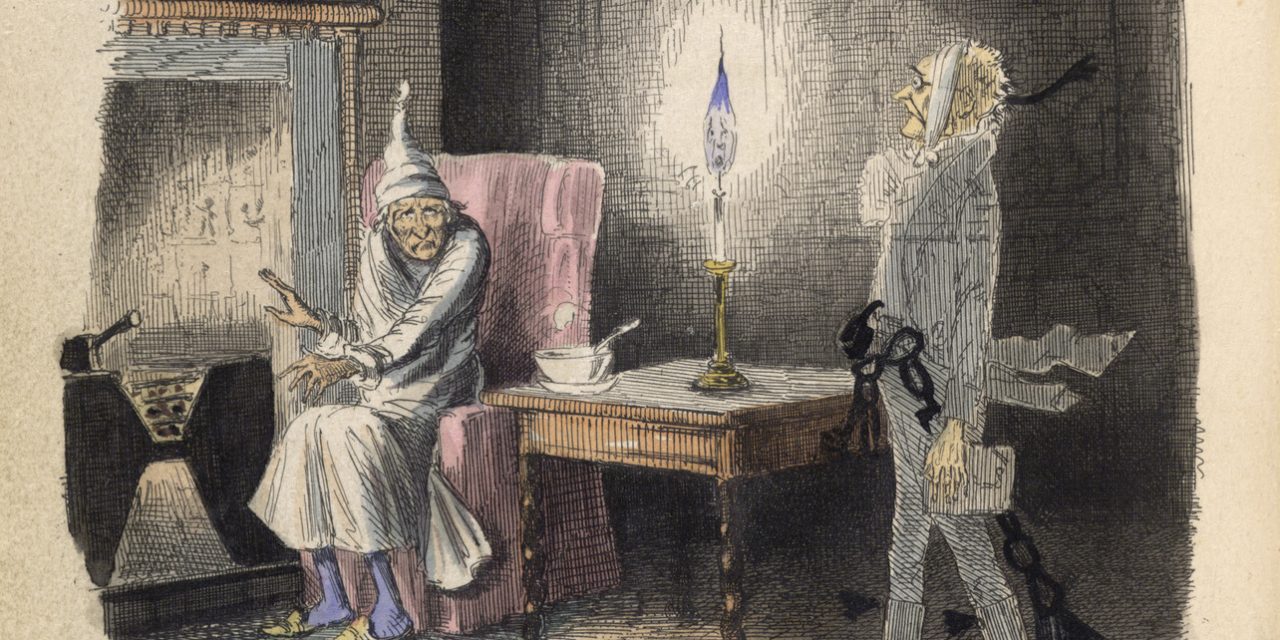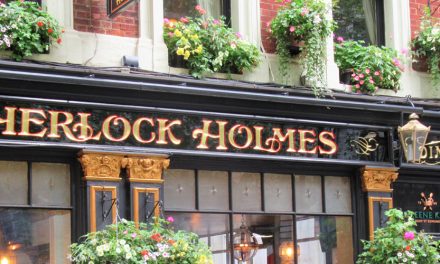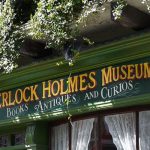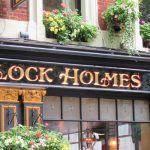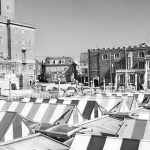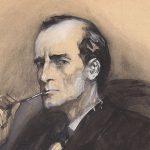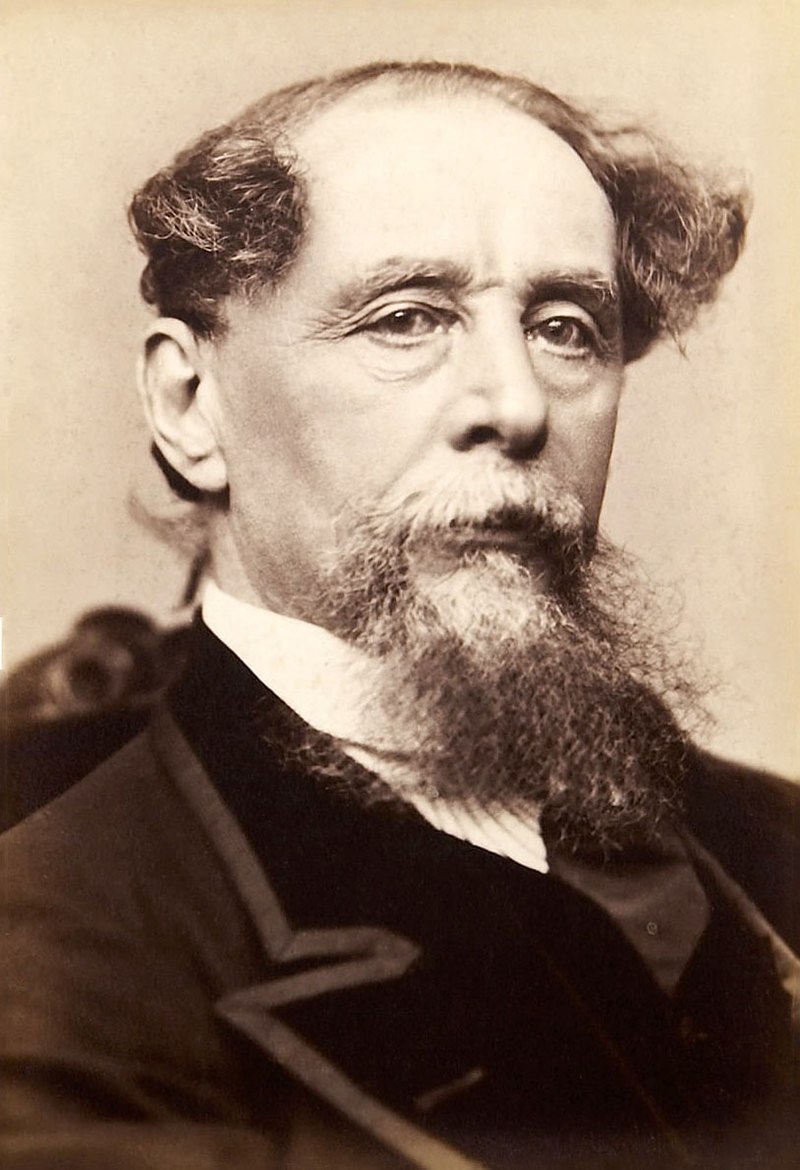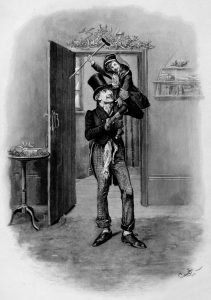
BAH HUMBUG!
It is 1843, and six days to Christmas. Charles Dickens, already world-famous for a series of best-selling novels, releases ‘A Christmas Carol’. It is to rapidly sell out six editions. More than that, it redefines a rather lacklustre and cold Pagan festival and turns it into the celebration we know today.
It is fast getting to that time again, the holiday which Dickens described – of ice and snow, of goodwill to all men, of families, of chestnuts, plum pudding and roasted goose, of cards and gifts, in short, of Christmas! If our greatest novelist did not exactly invent all these things, he certainly immortally encapsulated them in his most wonderful short novel ‘A Christmas Carol’.
Our present view of Christmas-tide is probably Germanic in origin. The Christmas tree, with gifts and candles, was introduced to Great Britain by Prince Albert, devoted consort of Queen Victoria who was herself what today we would call a ‘superfan’ of the novelist (he was granted a private audience with her shortly before his death in 1870 ). Yet the spirit of Christmas, of how we could be, of how we perhaps should be, and the possibility of change to that ideal, is simply, clearly and thrillingly presented by Dickens in his invention of one man – Ebenezer Scrooge.
THE MEANEST MAN ON EARTH
In Scrooge, Dickens presents us with the ultimate story of transformation. Here is a man totally wrapped up in negativity, hating everyone and doing nothing but harm to his fellow man. But Dickens shows us that even this miserable wretch, when given a good kicking, can change and become a good man. Thus ‘A Christmas Carol’ has it all: it can be great drama, an entertaining musical, a comedy or everything in one as in my personal favourite Yuletide entertainment, the completely daft and endearing ‘Muppets’ Christmas Carol’ with Michael Caine and Miss Piggy.
REDEMPTION IS UNIVERSAL
‘A Christmas Carol’is remarkable for many things, but one of the most striking is that while it deals in great themes – love, selfishness, redemption – it is the most vague of Dickens’ great novels in exactly where we are at any one time. It can be argued that this is intentional as the themes are universal and a lot of time is spent whisking Scrooge over the universe and from life to death to life again, with a touch of time-travel thrown in. But as to its earthly origins, most people know that it is based somewhere in the East End of London but will not be able to tell you more than that. However, at the beginning, as Dickens begins to warm to his theme of Christmas – cold, gaslight, ‘gruff’ old church bells, braziers, rapture of everyone for the time of year, holly, oranges, plums, nuts, stirring Christmas puddings in garrets, skating on the snow, singing carols, good cheer, meanness and forgiveness – he refers to ‘The Lord Mayor, in the stronghold of the mighty Mansion House’ who is giving instructions to his fifty cooks and butlers to keep Christmas as a Lord Mayor should. So we know where Scrooge is when he utters the immortal words ‘Bah. Humbug!’
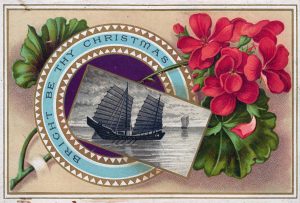
READING THE BOOK AT CHRISTMAS
When I was younger I was lucky enough to share a London house with several other people, all of whom were, like me, great Dickens fans. Every Christmas Eve, those of us who did not go somewhere else, had a ritual that I cannot help but smile about whenever I think back. We would make sure that we had finished dinner and washed up etc by about 8. Then, we would settle down in a circle on the living room carpet with coffee, mints, nuts, Tawny Port and Guinness. We would take it in turns to read the whole of ‘A Christmas Carol’ aloud. We had a particularly gruff-sounding flatmate who would say Scrooge’s lines with such brilliance that we would often have to stop for a few minutes, quite helpless with laughter. It was maybe fortunate that he had the invariable habit of nodding off about the same time as the Ghost of Christmas Present: this would be about 11 o’clock. The art, of course, was to make sure that the final words from Tiny Tim – God Bless Us, Everyone!’ – were said just after the clock struck twelve. In all the years we did it, I think we always achieved this – you can speed up or slow down, you see, or have another nut or something to keep on time…
If you have children, how about taking it in turns to read the book between you? It is short and will take maybe three hours. It is very funny and heart-warming, but as it will make you hungry when Dickens talks of Christmas fare – which is often – it is a good idea to have some snacks, nuts, fruit and things to nibble.
It is also the most perfect novel ever written. There is not an excess word. Here we have Charles Dickens in his pomp. He read it aloud to Maclise, Forster, Wilkie Collins and his family. I see him, with a glint in his eye, settling everyone down after dinner, saying, ‘I have written something. Care to hear it?’ He would have thoroughly enjoyed himself, watching all their faces. Then, at the end, silence and apparently there were a few tears. What more could they say?
DICKENS COMES TO NORWICH
Dickens was a great traveller. He was probably best known to the citizens of East Anglia from the tours he took in a type of entertainment that he also invented– ‘Readings of Charles Dickens’. His prose is theatrical in nature – Mamie Dickens, his daughter, tells us that once she watched him at work when he was completely unaware that he was not alone: he got up from his chair, went to the mirror and exchanged conversation with the character he was inventing in his imagination. Then he returned for a few minutes to write the exchange down, before, hey-ho, he was up again for another exchange in front of the mirror. This training lent itself perfectly to great dramatic monologues. And his readings from ‘A Christmas Carol’, as mentioned above, would generally bring the house down.
There was one place, however, where he did not do so well – Norwich. He gave two readings here in March 1867 at St Andrews Hall and the Royal Hotel. The audience was ‘not magnetic’ by which he means he could not feel any bond with his audience. Being a native of the city myself, I think I can understand how people here would refuse to be charmed by this famous man from the big smoke. We were stubborn then and still are, don’t you think?
A STARRING ROLE
Norwich was possibly also the scene of the very funny Eatanswill elections in ‘The Pickwick Papers’, where he remarks that the local people had a very fine opinion of their own importance. This is contested vigorously by several other places, notably Ipswich, but I think that the size of the election and description of the town points to Norwich.
HANGINGS
Dickens is reputed to have attended a public hanging in Norwich and was appalled at what he witnessed. They used to take place outside the Norman Castle: The Bell Hotel was a favoured place to rent a room for a good view. Dickens found the ‘party’ atmosphere – there was feasting, singing, (much) drinking and the sale of gruesome knick-knacks – appalling.
There is something about the city that makes it easy to imagine Dickens placing his characters here. In ‘English Journey’, J.B.Priestley remarks that Norwich has the most Dickensian atmosphere of any city he knows, excepting perhaps Canterbury.

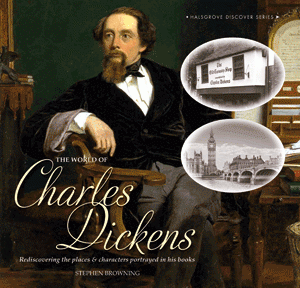
WICKED HUMOUR
It is here, too that Mr Pickwick and friends probably – I say that as some argue that this great ‘social event of the year’ takes place nearer Ipswich, but we simply do not know for sure -attend the summer party of Mrs Leo Hunter. My friends thought I was quite mad when, some years ago, I first read this scene: I simply kept laughing in the most unsuitable places, like the check-out queue at Marks and Spencer, as the poem arose uninvited into my mind. In the novel Mrs Leo Hunter is mocked for her supposed literary abilities and sensitivity. She recites her latest work to an amazed Mr Pickwick. It is called ‘Expiring Frog’ and goes like this:
‘‘Can I view thee panting, lying
On thy stomach, without sighing;
Can I unmoved see thee dying
On a log
Expiring frog!’’
‘Beautiful!’ said Mr Pickwick
‘Fine,’ said Mr Leo Hunter; ‘so simple.’
‘Very,’ said Mr Pickwick.
‘The next verse is even more touching. Shall I repeat it?’
‘If you please,’ said Mr Pickwick.
‘It runs thus,’ said the man, still more gravely.
“Say, have fiends in shape of boys,
With wild hallo, and brutal noise,
Hunted thee from marshy joys,
With a dog,
Expiring frog!’’
‘Finely expressed,’ said Mr Pickwick.
GREAT YARMOUTH
Great Yarmouth features in key scenes in David Copperfield. Dickens liked to walk here and get rid of his amazing energy. Once, in 1849, he took a holiday in Norfolk, walking from Yarmouth to Lowestoft and back again in one go – a distance of 23 miles. He found Yarmouth ‘the strangest place’ and set key scenes from David Copperfield on an upturned boat/ turned home on the beach. Little Emily was taken from here and seduced by Steerforth.
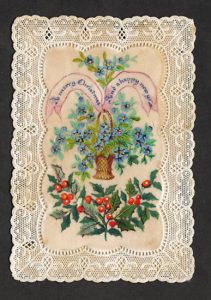
Steerforth was to perish in possibly the most terrifying storm in literature, which wrecked his ship off Yarmouth sands as he attempted to return to England following his fall from grace. This is how Dickens describes it:
‘The tremendous sea itself, when I could find sufficient pause to look at it, in the agitation of the blinding wind, the flying stones and sand, and the awful noise, confounded me. As the high watery walls came rolling in, and, at their highest, tumbled into surf, they looked as if the least would engulf the town’.
Anthony Trollope, Dickens’ famous contemporary, thought his affection for the town quite ridiculous and supposedly planned the novel ‘Can You Forgive Her?’ in 1863 as an antidote. There was a good deal of rivalry, at times loathing, between the great literary figures of the day – Dickens and Thackeray in particular having a lifelong ding-dong, the latter regarding Dickens as unbearably coarse.
Dickens himself was not above gentle ribbing of Norfolk folk either when it pleased him. We find the following in his last great unfinished novel ‘The Mystery of Edwin Drood’:
‘Mr Bazzard’s father, being a Norfolk farmer, would have furiously laid about him with a flail, a pitch-fork, and every agricultural implement available for assaulting purposes, on the slightest hint of his son’s having written a play’.
BURY ST EDMUNDS
Mr Pickwick pops up all over and it is no surprise to find him in our neighbouring county of Suffolk. It is in Bury St Edmunds that he finds himself fooled – along, most unusually with the acute Sam Weller – and ends up in a compromising position in the garden of a school for young ladies.
THE RED BARN MURDER
Bury St Edmunds also attracted Dickens’ attention in a completely different sense. The town witnessed the execution by hanging of William Corder in 1828 in the notorious Red Barn Murder, when Corder shot his fiancée. Dickens published an account of the trial and hanging in ‘All The Year Round’, the monthly magazine he ran. Dickens campaigned against such executions all his life and the aftermath of this one was particularly gruesome – you could apparently buy a piece of the hanging rope for a guinea, and Corder’s scalp, with an ear attached, was displayed in Oxford Street in London.
SOUTHWOLD, CHARLES DICKENS AND GEORGE ORWELL
The seaside resort of Southwold has a special link to Dickens. Southwold was the home of George Orwell and it was here that he retired, in frail health, hoping the sea air would help repair his damaged lungs. The year was 1940. Whilst here he wrote his famous essay on Charles Dickens, whom he greatly admired. He says that when he read Dickens, he saw the face of a man behind the words – ‘It is the face of a man of about forty, with a small beard and a high colour. He is laughing, with a touch of anger in his laughter, but no triumph, no malignity. It is the face of a man who is always fighting against something, but who fights in the open and is not frightened, the face of a man who is generously angry…’
A NEW RIDDLE
I have also, during the researches for my book ‘The World of Charles Dickens’ (Halsgrove 2012), found an interesting little riddle which concerns the Suffolk town of Ipswich. Here, Mr Pickwick, finds himself in a hotel where he gets lost looking for his room late at night. He enters a room he supposes to be his, but is mortified to find that a middle-aged lady subsequently arrives ‘in yellow curl-papers’. He hides, but the lady hears a noise:
‘Gracious Heaven!’ said the middle-aged lady’ what’s that?’
‘It’s – it’s—only a gentleman, ma-am,’ said Mr Pickwick, from behind the curtains.
‘A gentleman!’ said the lady, with a terrific scream.
‘It’s all over!’ thought Mr Pickwick.
‘A strange man!’ shrieked the lady.
The riddle is this. In ‘Bozland: Dickens’ People and Places’, published in 1895, the author claims to have spoken to a man who has heard from another man who has spoken to Dickens himself that this is based on a real incident. It was Dickens himself who became lost in the hotel and committed this transgression. I am quite prepared to believe it, as it has the ring of truth, although the details may well have been changed for dramatic impact. It was typical of him to take and develop such a genuine incident.
A fascinating fact is that new tales of Dickens are still coming to light. Apart from his great novels and articles, he wrote thousands of letters, some of which are still being ‘discovered’. Will there be more stories of Dickens, ‘A Christmas Carol’ Norwich and East Anglia? I sincerely hope and expect so.
A BOOK IS AVAILABLE – ‘THE WORLD OF CHARLES DICKENS’ BY STEPHEN BROWNING, available from good bookshops nation-wide.
Check it out in the Daily Telegraph website which carries a feature plus 26 photographs from the book @Telegraph http://fw.to/yn5oemm
The book has received exclusively five star verified reviews on Amazon in both the UK and USA. Here are a couple from the UK
FIVE STARS OUT OF FIVE Verified Purchase By Ex Fairy
Such a pleasure to read with wonderful photographs and illustrations. I thoroughly enjoyed the journey as the author leads us through Dickens’ life and times. Written with scholarly enthusiasm and a mix of humour, it makes for light enjoyable reading. It explains how many of the names of the characters came to be. Brilliant! Contrasting as it was, with how it, is makes me want to visit some of the locations to drink in the atmosphere first hand.
5.0 out of 5 stars A must for every Dickens fan.
Verified Purchase by Linda
Wonderful photos and informative text. We are using it to plan a trip to Rochester and surrounding Dickens sites.
And one from the USA
5.0 out of 5 stars Excellent book!
Verified Purchase by Ruth
It is full of interesting information that I had not known before, and I am a big Dickens fan. I’m really glad that I got this book.

